
UEIUA CPY-2420 Review and possible problems
20A MPPT Regulator for solar systems CPY 2420
This is a cheap true MPPT regulator from UEIUA chinese producer, you can get it from China at less than 20€/20$. I bought their regulator for my first small photovoltaic system, started with a single 36 cell 50W panel and now expanded it to its maximum with 4 x 50W panels.
The case is made in solid plastic and the rear part is in metal to dissipate heat. It’s a small unit, about 13x10x4cm and weighs 300gr. It comes with a very small “manual”, a 4 page basic explanation of usage (connect battery before panels) and technical data.
Maximum rating is 20A charge and 20A discharge. To know how many panels you can connect find the Imp (Max power Current) parameter on the panel’s label. The panels I’m using have a 2.75A Imp value, so 20/2.75=7 panels. It’s not good to keep the device loaded at maximum so I’d go for a maximum of 6 x 50W panels (total 300W).
CPY-2420 Usage
Mounting the regulator is a no-fuss straightforward operation. Connect the battery first, the panel after and the leds should come on indicating the box is working. It has no buttons and no switches, just connect the cables and it’s on and running. I appreciate the little transparent protection cover for the connectors.
The front USB 5V connector is useful in some situations, even just to connect your cellphone for charging.
During usage on hot days when panels are giving full power it heats up slightly but never too much.
I must say, I am satisfied with the CPY-2420, it doesn’t have any nifty features, it just a plain regulator which does its job quite well. So there’s no programmable timers or battery voltage charge limits, nor display and no lithium battery support. But I think it’s worth it’s money, yes.
After three months usage I had three different problems which I suppose don’t change my mind on the product but which surely need attention.
Problem n.1 – Burnt led
After a couple of weeks usage the middle led of the three at the top-right (indicating battery charge and charge status) started getting dimmer until it just burnt out. Sooner or later I’ll open the box and change it.
Problem n.2 – Charging voltage
I noticed every now and then the charging level of my lead-acid AGM batteries goes over 15V with peak values of 16/16.1V only for a few seconds. It only happened a few times on hot (italian) days in June. Maximum charging voltage for my Deep Cycle AGM batteries should be 14.8V and, yes, here I’m missing a programmable voltage limit function; and maybe a temperature control over the battery, too, to lower charge voltage when temperature raises (but I’m not sure if more expensive regulators have this, must check).
Problem n.3 – Load connectors and melted cables
I use the load output of the regulator to feed two small Volt/Ampere displays (model DSN-VC288) which absorb less than 20mA each. One day I was doing some test on the FV panels and disconnected the positive cable while the system was running. The result was that I found both the negative cables (from the regulator to the displays) melted, so something must have gone wrong there.
I promptly wrote to the producer of the regulator explaining the problem and asking for a solution. They were very kind to answer quickly and suggested to use larger cables. Ok, I admit I wasn’t convinced with the solution so I decided to make a small circuit to protect devices connected to the regulator LOAD output and I put some new AWG26 cables.
[ UPDATE: I made a small circuit for limiting current and voltage and connected it between the +/- Load Connectors and the display, schematics here http://electronic.acca3.it/2020/09/08/simple-dc-voltage-and-current-limiter/ ]Conclusions
For less than 20€ I didn’t expect much to be honest. The CPY-2420 has a very nice look, nothing like many other cheap regulators under 10€. It’s solid and does its job as an MPPT regulator. I miss some more advanced features but this product is well worth the money you spend.
This is my final mounted control panel.
Enjoy!
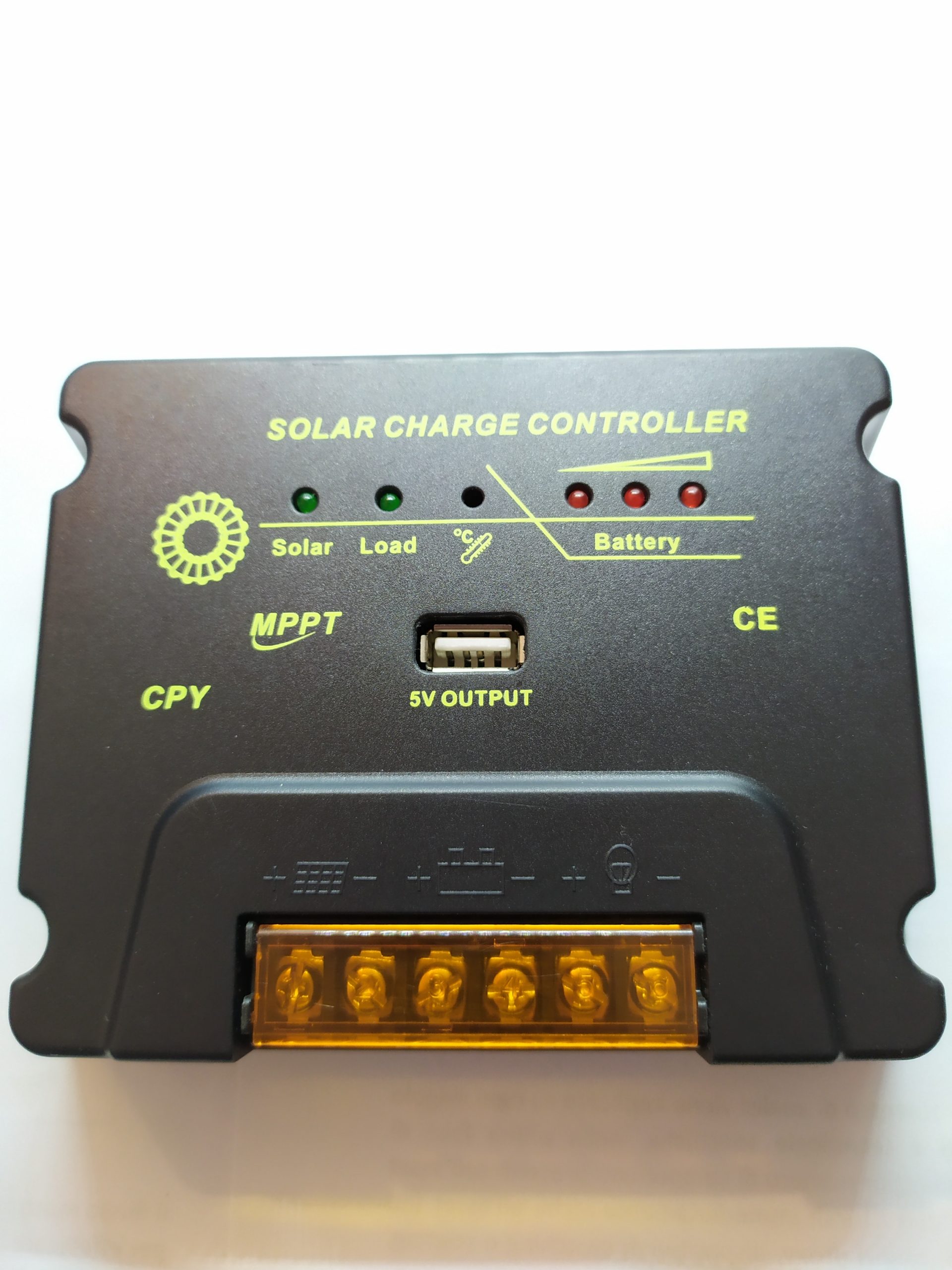
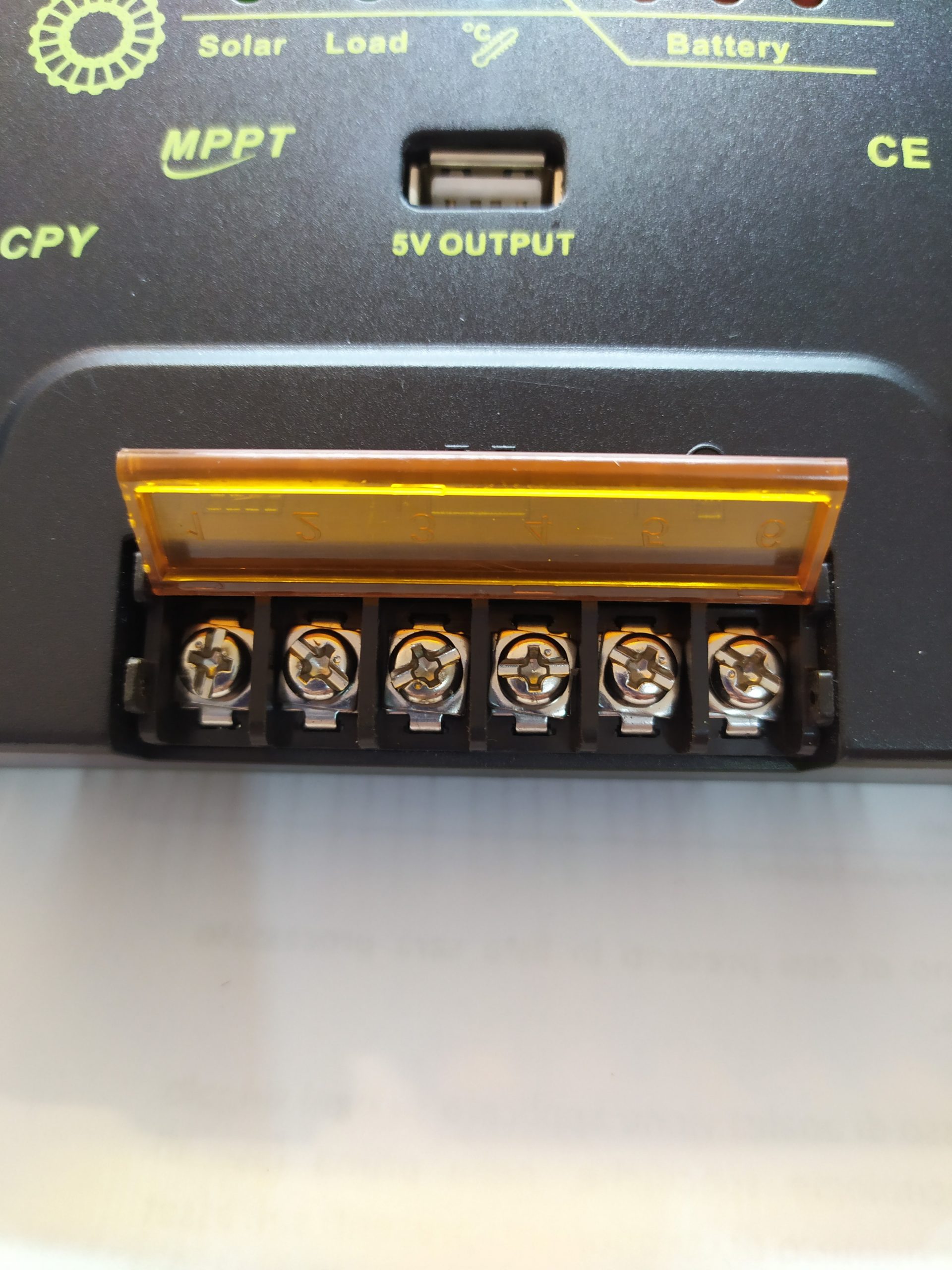

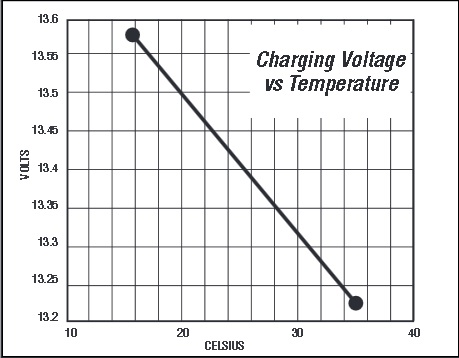

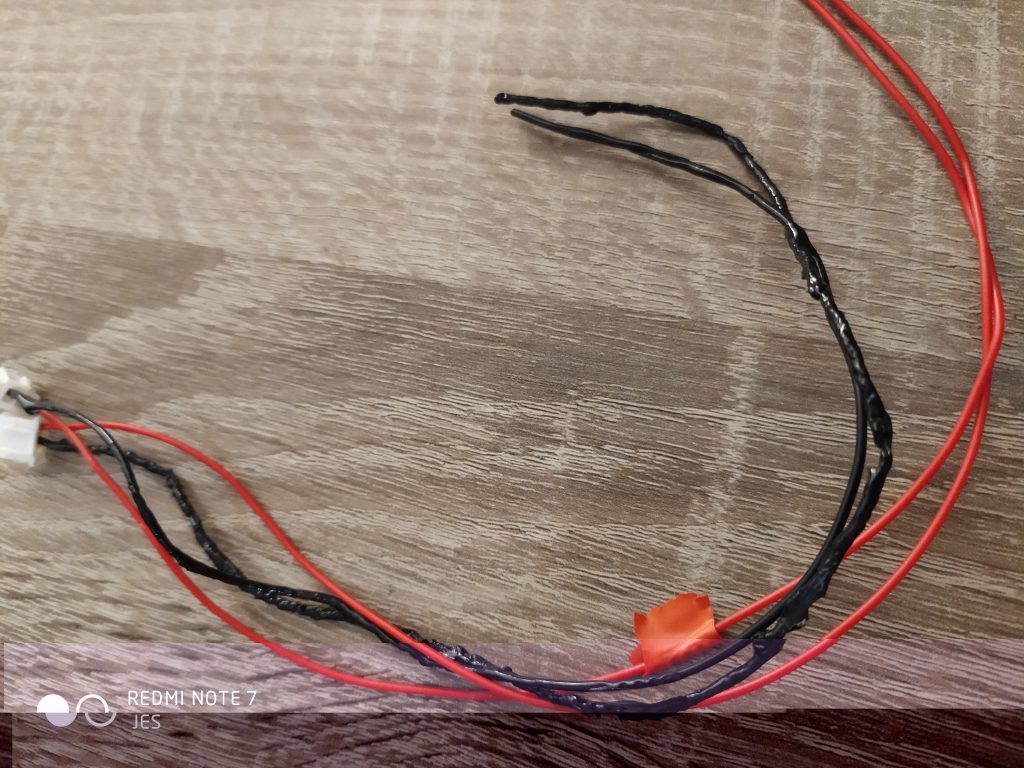

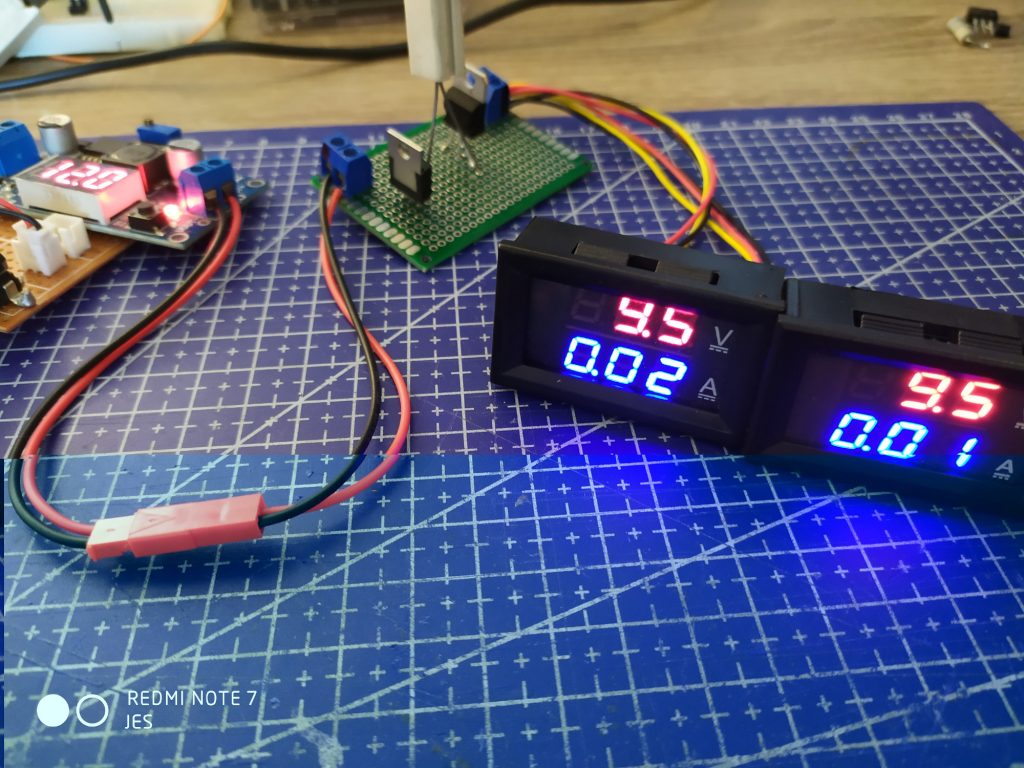
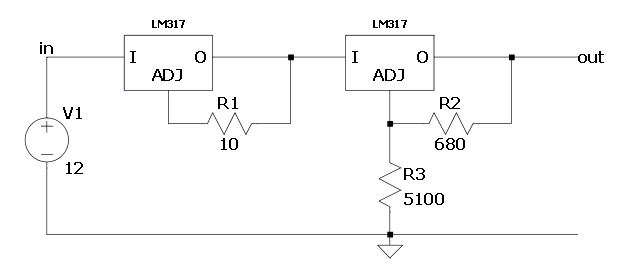

how many panel watts can be put or install in this 20a SCC?
Hi Mark, it’s a 20A rated controller. It can receive max.20A from the panels and charge batteries at the same current. My four 50W panels aren’t exposed in an optimal way so I get a maximum of about 120W from the panels (instead of a nominal 200W) and ampmeter shows the battery charging at 14V-15V@8-9A. To calculate the maximum number of panels use the “Max Power Current” (Imp parameter) which is written on the panel’s label. A single 50W panel like mine has Imp=2.75A. So 20A / 2.75A = 7.2. That’s a maximum of 7 panels. Consider that I wouldn’t keep the charger loaded to its maximum, I would go for a maximum of 6 x 50W panels.
Ab welcher Akkuspannung fängt er wieder an nachzuladen an, und hat er eine Erhaltungsladung Wie hoch ist die Ladespannung insgesamt habe Reinblei Akkus und die dürfen nicht über 14,8 Volt komen sonst nehemn die sofort schade und Kosten Stück 549 Euro
[TRANSLATED] At what battery voltage does it start to recharge again, and does it have a trickle charge What is the total charging voltage for pure lead batteries and they must not exceed 14.8 volts, otherwise they are a shame and cost 549 euros each
Hi Mark, thank you for your time. The MMPT controller does do a trickle charge when battery is fully charged. The MPPT manual parameters say: Voltage stop charging 14.7V; Overvoltage protection 16V, which is slightly too high for the battery. What I think happens is this: when voltage from the panels oscillate, the MPPT controller regulates output current (and voltage) but maybe doesn’t correctly limit the output voltage which sometimes, a for a few seconds, goes over 16V. What I can say is that the AGM batteries (Ultracell 9AH in parallel) over these two years have managed this quite well and didn’t seem to have been damaged, the performance has not changed over time.
Bei dem Akku Preis würde ich mich nicht für billigen china Schrott interessieren sondern einen ECHTEN mppt Controller von z.B. Victron Energy nehmen!
Hi Nando! This unit costs 20€, a 20A Victron costs 135€ on Amazon. If you’re on a low budget and want to make your first super-cheap system to understand how it works, then this chinese unit is perfect. And after two years it’s still working! The new unit I bought is a 5KW Hybrid Inverter, but I’m happy I was able to learn about photovoltaic with the few euros I had that year. Thank you for your comment, yes, Victron is a good product!
Könntest Du mir ein Bild vom inneren des Ladereglers an meine Email Adresse schicken, damit ich die beiden Wiederstände Suchen die eine Spannungsteiler Bilder voraus der Prozessor die Ladespannung nimmt. weil mehr als 5 Volt kann der ANalogeingang vom Prozessor nicht haben dann ist der hin. Ich muss auf 14,4 Volt Ladespannung kommen und eine Schutzschaltung einbauen das er bei überschreiten von 24,5 Volt das Modul abschaltet
[TRANSLATED] Could you send me a picture of the inside of the charge controller to my email address so that I can look for the two resistors that take a voltage divider pictures ahead the processor takes the charging voltage. because the analog input from the processor cannot have more than 5 volts, then it’s gone. I have to get to 14.4 volts charging voltage and install a protective circuit that switches off the module if 24.5 volts are exceeded
I’ll be back next week and will send you a photo of the board. Thanks.
Da ist ein fertiges MPPT IC drauf da braucht man nur ins DPF schauen und weis an welchen Beinchen der Spannungsteiler sitzt und kann den auf 24,4 Volt einstellen. Bei der LED macht man einfach anstelle eines 470 Ohm Wiederstands einen 680 Ohm Wiederstand drauf dann brennt die auch nicht durch. Die Einschaltspannung Erhaltungsladung gibt es einen 2 Spannungsteiler für an 2 Analogeingängen. Kenne das MPPT IC. Die Ausgleichsspannung muss man nur ein Beinchen auf Masse legen und schon ist die aus.
[Translated] There is a finished MPPT IC on it, you only need to look into the DPF and know which pins the voltage divider is on and you can set it to 24.4 volts. With the LED you simply put a 680 ohm resistor on it instead of a 470 ohm resistor, then it won’t burn out either. The switch-on voltage trickle charge, there is a 2 voltage divider for 2 analog inputs. Know the MPPT IC. You only have to put a little leg on ground for the equalizing voltage and it’s off.
Uhm, I don’t know much about MPPT ICs. If I understand the translation (thanks Google Translate!) you say it’s possible to lower output voltage by working on the voltage divider. Could be a good idea. Next week I’ll open the box to change the led, check the led’s resistors, and send you the board’s photo. Thanks a lot.
Hi I have one of these in our camper van, it came with the van but no instructions, is there a user manual online somewhere please.
Hi there. The manual is actually a tiny 4-face piece of paper. The exact contents of the manual can be read here (scroll down, it’s from product overview onwards): https://it.aliexpress.com/item/32859466171.html
Later I’ll add the manual to the article.
Hi
Did anyone manage to modify it to make sure it does not go above 15v?
I didn’t find anybody who modified the unit, not actually sure if it’s possible (if there’s an IC doing all the electronic stuff). Schematics could help.
Hey Julian, wondering how to test to see if the furthest right led light on the (battery charge) display on the 2420 model? The light is possibly burnt out as I fully charged the batteries today, via 12V charger at 2 Amps. Please let me know what you think and than you for all your prior information.
Hi there Ross,
maybe the led has burnt out, same happened to my middle led. It should be quite easy to change a burnt led, I didn’t do it until now mainly because my days are quite full! It should just be: remove the screws and open the box, find the leds on the board, unsolder the burnt led and mount one of the same type.
But to see the battery charge I don’t look at those leds, I mounted a small display which gives me battery Volts and Amperes (amperes flowing). Connection of the display is easy and you can get for a couple of dollars from AliExpress (or on Amazon/Ebay I suppose for some extra dollars). Note, max.10A flowing in/out from the battery. If amperes are higher you need a 50A or higher display which has an extra piece to mount (a shunt):
https://s.click.aliexpress.com/e/_Dn4kVdJ
Even simplier a small display that only shows Volts (only three wires), this one for e.g.:
https://s.click.aliexpress.com/e/_DkdNyRB
I might fix my led one day, in case I’ll share the photos!
Have a nice day in Mexico!
[ P.S. please note the two links I gave are from my AliExpress affiliate account ]